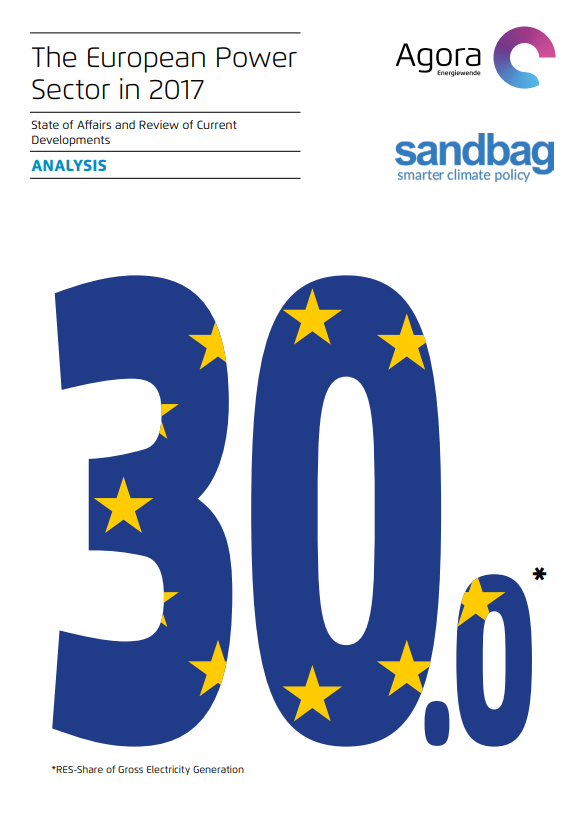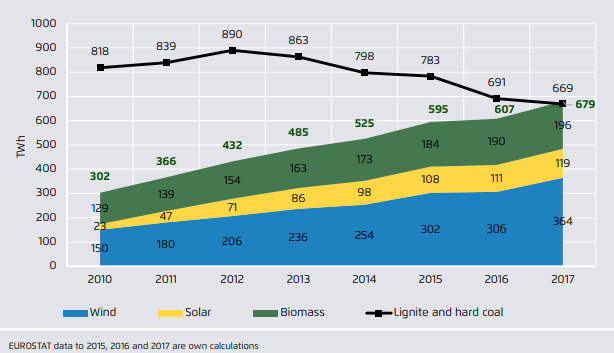01 Mar 2018
For the first time, wind, sun and biomass overtook coal in supplying European electricity

According to new report The European Power Sector in 2017, from London-based Sandbag and Berlin-based Agora energiewende think tanks, for the first time, the European Union generated more electricity from wind, solar and biomass than from coal in 2017.
The report confirms that this is incredible progress, considering just five years ago coal generation was more than twice that of wind, solar and biomass.

The increase in renewables comes from wind, solar and biomass generation since Europe’s hydro potential is largely tapped. They rose by 12% in 2017 to 679 Terawatt hours, putting wind, solar and biomass above coal generation for the first time. This is incredible progress, considering just five years ago, coal generation was more than twice that of wind, solar and biomass. The main countries that have contributed to the growth in renewables are Germany and the UK which alone contributed to 56% of the growth in renewables in the past three years.
Germany is the largest contributor to biomass generation, where hundreds of small biogas plants. The UK is the second largest, generating 16 per cent of EU biomass electricity.
European electricity consumption has risen for a third consecutive year. With Europe’s economy being on a growth path again, power demand is rising as well. The report suggests that Europe’s efficiency efforts are not sufficient.
In regards with CO2 emissions, low hydro and nuclear generation coupled with increasing demand led to increasing fossil generation. Despite the large rise in wind generation, the power sector CO2 emissions remained unchanged at 1019 million tonnes.
In addition, the report analyses the main coal phase-out objectives of the Member States. It concludes that Western Europe is phasing out coal, but Eastern Europe is sticking to it. Three more Member States announced coal phase-outs in 2017 – Netherlands, Italy and Portugal. They join France and the UK in committing to phase-out coal, while Eastern European countries are sticking to coal. The debate in Germany, Europe’s largest coal and lignite consumer, is ongoing and will only be decided in 2019.
